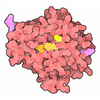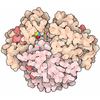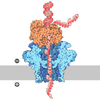Entry Database : PDB / ID : 3nylTitle The X-ray structure of an antiparallel dimer of the human amyloid precursor protein E2 domain Amyloid beta (A4) protein (Peptidase nexin-II, Alzheimer disease), isoform CRA_b Keywords / / Function / homology Function Domain/homology Component
/ / / / / / / / / / / / / / / / / / / / / / / / / / / / / / / / / / / / / / / / / / / / / / / / / / / / / / / / / / / / / / / / / / / / / / / / / / / / / / / / / / / / / / / / / / / / / / / / / / / / / / / / / / / / / / / / / / / / / / / / / / / / / / / / / / / / / / / / / / / / / / / / / / / / / / / Biological species Homo sapiens (human)Method / / / Resolution : 2.8 Å Authors Ha, Y. / Hu, J. / Lee, S. / Liu, X. / Wang, Y. Journal : Mol.Cell / Year : 2004Title : The X-ray structure of an antiparallel dimer of the human amyloid precursor protein E2 domain.Authors : Wang, Y. / Ha, Y. History Deposition Jul 15, 2010 Deposition site / Processing site Supersession Jul 13, 2011 ID 1RW6 Revision 1.0 Jul 13, 2011 Provider / Type Revision 1.1 Feb 21, 2024 Group / Database referencesCategory chem_comp_atom / chem_comp_bond ... chem_comp_atom / chem_comp_bond / database_2 / struct_ref_seq_dif Item / _database_2.pdbx_database_accession / _struct_ref_seq_dif.details
Show all Show less
 Yorodumi
Yorodumi Open data
Open data Basic information
Basic information Components
Components Keywords
Keywords Function and homology information
Function and homology information Homo sapiens (human)
Homo sapiens (human) X-RAY DIFFRACTION /
X-RAY DIFFRACTION /  SYNCHROTRON /
SYNCHROTRON /  MAD / Resolution: 2.8 Å
MAD / Resolution: 2.8 Å  Authors
Authors Citation
Citation Journal: Mol.Cell / Year: 2004
Journal: Mol.Cell / Year: 2004 Structure visualization
Structure visualization Molmil
Molmil Jmol/JSmol
Jmol/JSmol Downloads & links
Downloads & links Download
Download 3nyl.cif.gz
3nyl.cif.gz PDBx/mmCIF format
PDBx/mmCIF format pdb3nyl.ent.gz
pdb3nyl.ent.gz PDB format
PDB format 3nyl.json.gz
3nyl.json.gz PDBx/mmJSON format
PDBx/mmJSON format Other downloads
Other downloads https://data.pdbj.org/pub/pdb/validation_reports/ny/3nyl
https://data.pdbj.org/pub/pdb/validation_reports/ny/3nyl ftp://data.pdbj.org/pub/pdb/validation_reports/ny/3nyl
ftp://data.pdbj.org/pub/pdb/validation_reports/ny/3nyl Links
Links Assembly
Assembly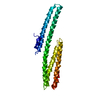

 Components
Components Homo sapiens (human) / Gene: APP, hCG_1810805 / Plasmid: pET28 / Production host:
Homo sapiens (human) / Gene: APP, hCG_1810805 / Plasmid: pET28 / Production host: 
 X-RAY DIFFRACTION / Number of used crystals: 1
X-RAY DIFFRACTION / Number of used crystals: 1  Sample preparation
Sample preparation SYNCHROTRON / Site:
SYNCHROTRON / Site:  NSLS
NSLS  / Beamline: X25 / Wavelength: 1.009 Å
/ Beamline: X25 / Wavelength: 1.009 Å MAD
MAD Processing
Processing MAD / Resolution: 2.8→40 Å / Occupancy max: 1 / Occupancy min: 1 / σ(F): 0 / σ(I): 0 / Stereochemistry target values: Engh & Huber
MAD / Resolution: 2.8→40 Å / Occupancy max: 1 / Occupancy min: 1 / σ(F): 0 / σ(I): 0 / Stereochemistry target values: Engh & Huber Movie
Movie Controller
Controller



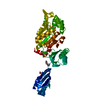

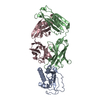
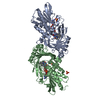

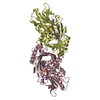
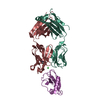

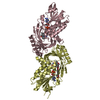
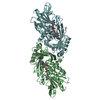
 PDBj
PDBj








